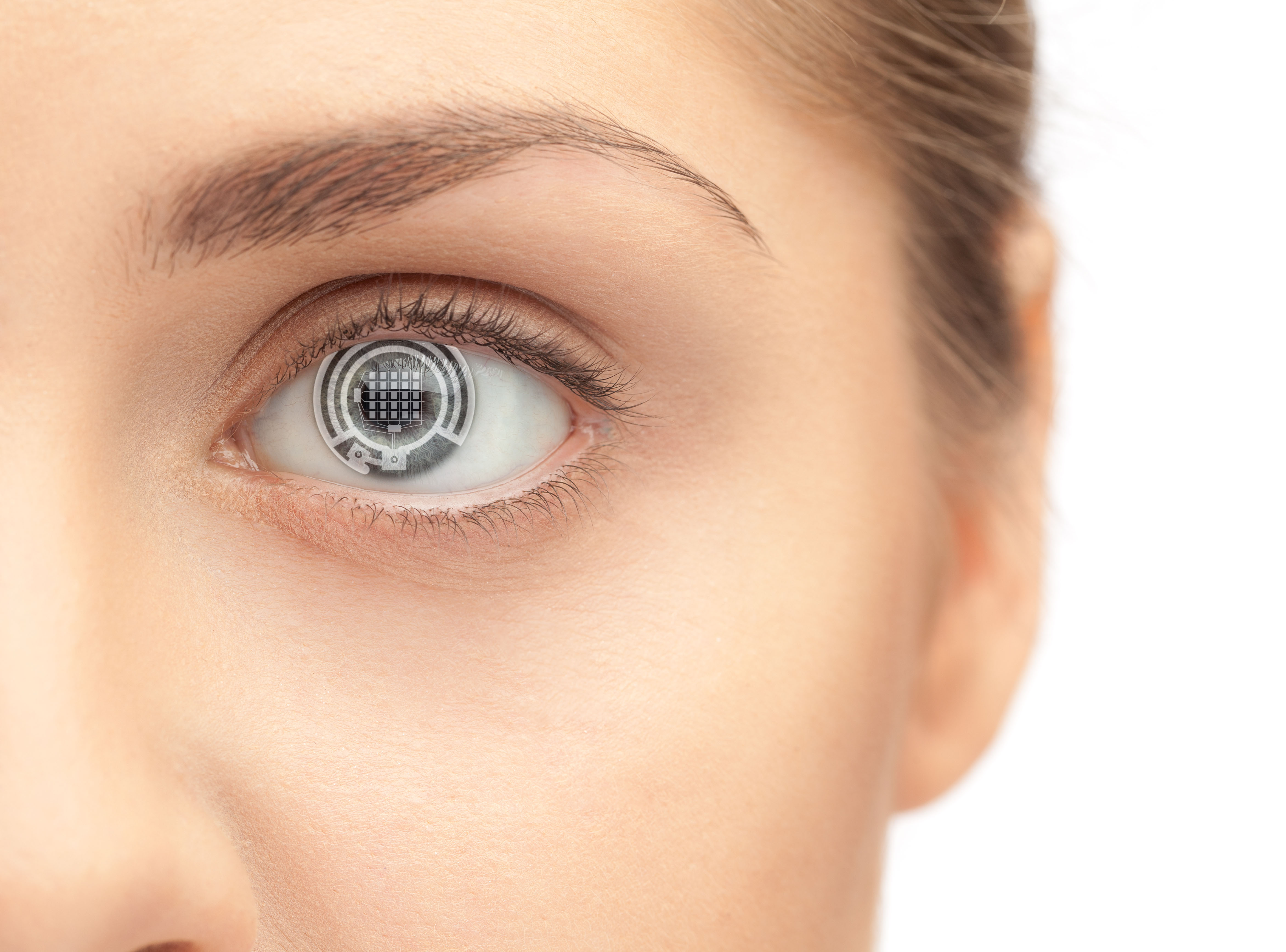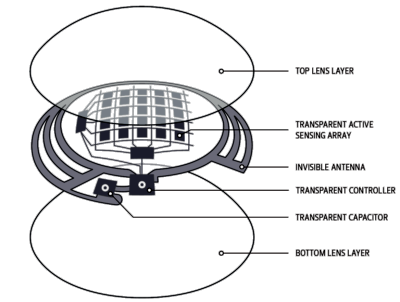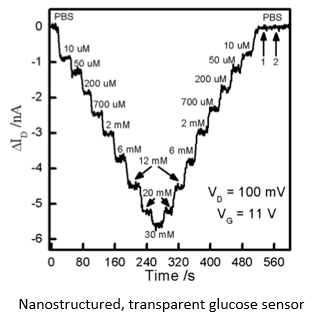
We are interested in utilizing novel fabrication technologies to develop ubiquitous sensing systems. Current efforts are on the development of a flexible transparent, field-effect sensors to monitor glucose levels for type 1 diabetes patients by using their tears. Our goal is to integrate the sensor in a contact lens as part of an artificial pancreas, which will hopefully improve long-term patent health.


The requirements for the sensor are high glucose selectivity, fast/predictable response, mechanically durable, minimally invasive, and cost-effective to produce. We use a variety of techniques to fabricate and characterize these sensors, including e-Jet printing and field-effect measurements, respectively. A schematic of our plan to develop a multi-analyze sensing contact lens design is shown above, as well as the change in sensor current versus glucose concentration. No interference from acetaminophen and ascorbic acid were observed, as indicated by the injection points indicated by arrows 1 and 2, respectively.
Our goal is to expand the contact lens sensors to a range of tear fluid biomarkers, which can be used to identify a range of ocular disorders (dry eye disease, diabetic retinopathy, glaucoma, etc.), cancers (colon, prostrate, breast, lung, etc.), multiple sclerosis, and many other diseases.
Funding for this research is provided through the National Institutes of Health, the Leona M. and Harry B. Helmsley Charitable Trust, the Juvenile Diabetes Research Foundation, and ONAMI.


